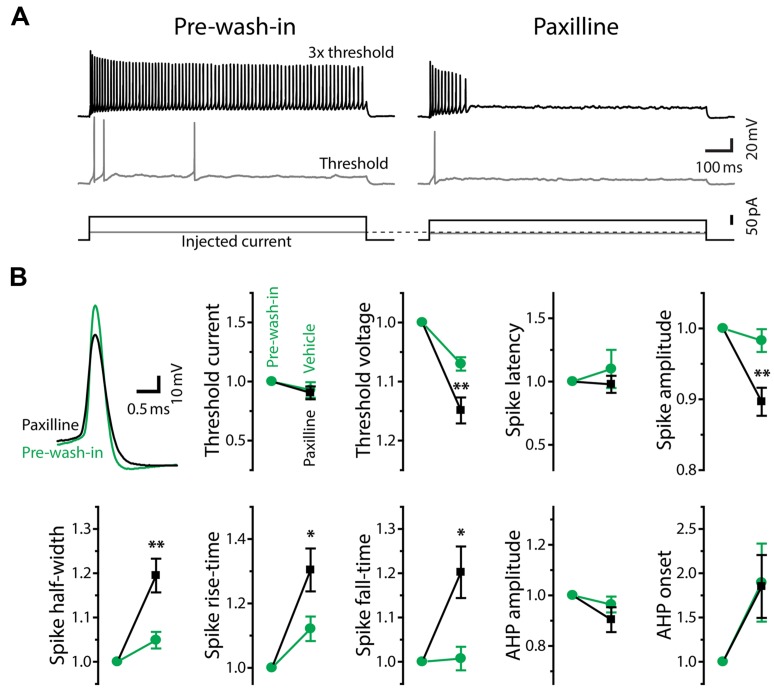FIGURE 8.
Large-conductance Ca2+-activated potassium currents mediate tonic firing. (A) Firing mode of a tonic neuron changed from tonic (left, pre-wash-in) to phasic (right) during bath application of the large-conductance KCa (BK) channel blocker, paxilline (after 10 min of wash-in). Traces are labeled as in Figure 5A. Note that, unlike Ni2+ application (Figure 5), paxilline did not increase threshold current intensity. (B) Upper left, superimposed traces of single action potentials induced by threshold current injection, aligned at peak time and threshold voltage. Paxilline application (black) reduced the amplitude and increased the width of action potentials (pre-wash-in, green). Traces are obtained from the same cell in (A). Graphs, spike parameters after 8–12 min wash-in of paxilline (black) or DMSO (vehicle, green). Measurements are reported as relative to those before wash-in (pre-wash-in, green). Single and double asterisks represent significant difference (p < 0.05, and p < 0.01, respectively, evaluated by Student’s t-test) between relative changes during paxilline and vehicle application. Although there were slight changes during vehicle wash-in, suggesting a non-specific effect of long-term recording, paxilline further lowered spike amplitude, increased spike rise-time, fall-time, and half-width, similar to Ni2+ application. However, unlike Ni2+, paxilline did not significantly affect threshold current and AHP, and it significantly hyperpolarized threshold voltage.

